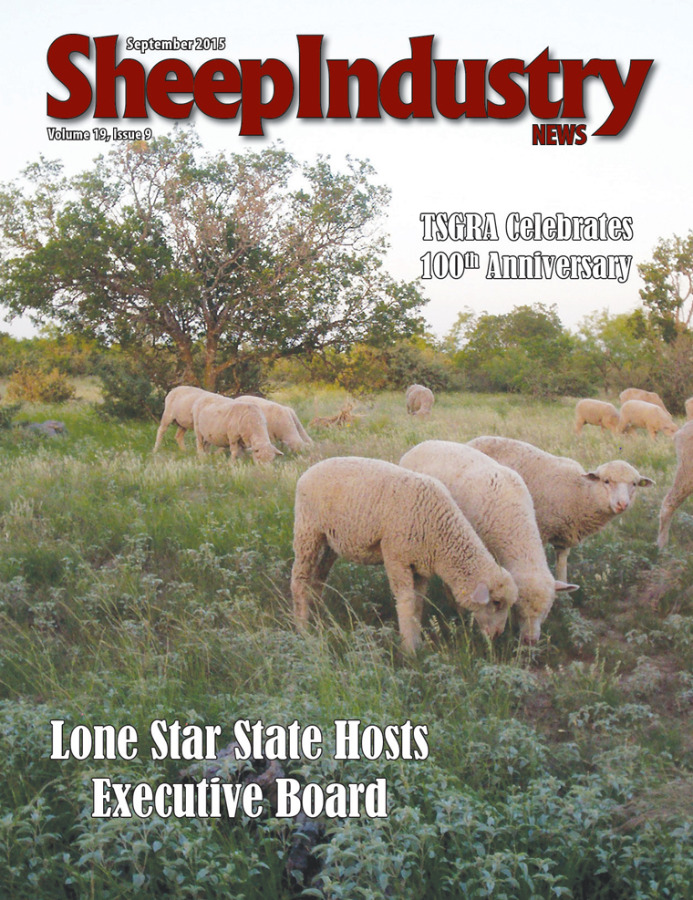Burton Pfliger, ASI President
The ASI office distributed nearly 20,000 emails and individual mailings to all association members in April and May regarding proposed changes to the H-2A sheepherder rule of the U.S. Department of Labor.
We estimate 38 percent of all sheep in America are tended by an H-2A sheepherder and the nation’s two largest lamb companies depend on herded sheep for 60 percent or more of the lamb they process, so the issue is obviously very large for our business.
The comment period of 45 days fell during the busiest time of year for most farmers and ranchers, yet 500 producers, companies and organizations did provide comments to the department’s proposal. Comments focused on two areas of concern: tripling of monthly wages and the eligibility of the ranch to hire herders. Nearly all who responded indicated they would not be able to afford the wages and many stated they would not be eligible to hire herders despite their ranch having done so for decades.
The proposal suggests if the sheep are within sight of a fence or livestock facility half the year, the ranch would not be eligible to hire an H-2A herder. California operations would be impacted considerably on this provision even though the base wage in the state for herders is $1,600 plus per month today.
The proposal would increase the wage for a herder in South Dakota for example to nearly $39,000 per year plus free housing and food. Would your operation be able to handle this? Remember, airfare from Mexico or Peru is your expense, as well as clothing and all paperwork and record keeping for the existing department requirements. All totaled, you’re looking at $50,000 a year per herder.
The comments of the Mountain Plains Agriculture Service and Western Range Association (the two groups that work with ranchers and herders through the maze of federal regulations and audits) also address increased rules including instances where hourly time sheets would be required. University of Wyoming economists analyzed the wage proposal and found that 70 percent of the time, a typical sheep operation would not be able to cover the cost of production. Based on the last 20 years of lamb and wool revenue, only 8 percent of the time would the sheep ranch turn a profit under the proposed regulations. That’s pretty damning evidence that the proposed wage is not sustainable for the ranch or the herder program.
Fortunately, the industry provided solutions to the department concerning both of the key issues. To address the base wage, two proposals were provided, both of which increase the wage hundreds of dollars per month and guarantee annual raises. We also offered an alternative definition of grazing that would allow most ranches who have employed herders in the past to continue doing so in the future.
Commenters questioned, “What is the alternative if we can’t hire herders?” Americans have been unwilling to herd sheep for a living since the 1950s, which is why the sheep industry has special provisions under the H-2A non-immigrant labor program in the first place. I encourage you to view the comments of ASI, WRA and MPAS in our legislative action center at SheepUSA.org.
Since the comment period closed, we have continued to keep Congress informed and supported a joint letter from members of the U.S. House of Representatives and U.S. Senate to the administration, dated July 27. The letter from Rep. Cynthia Lummis (Wyo.) was signed by 27 representatives and seven senators.
Rep. Lummis also chaired a recent oversight subcommittee in her home state to address the difficulties those in the agriculture industry are facing due to increased government regulation on this issue, as well as grazing threatened by bighorn sheep management. Sheep producers Shaun Sims and Patrick O’Toole testified before Lummis and Rep. Rob Bishop (Utah) that the H2-A proposal would put them out of the industry.
Additionally, we have briefed the U.S. Department of Agriculture on the impacts of the proposal so they can discuss this with the Department of Labor. Under U.S. regulations, once the public comment period ends, federal officials are allowed to discuss the issue only with other federal agencies. ASI met with USDA political appointees three times in July toward this end on the impacts to sheep inventory and family operations, as well as USDA programs.
Another impact we discussed is, “What happens if a ranch cannot afford a herder?” Most do not have an alternative as they also graze forest or Bureau of Land Management lands part of the year and conditions of those grazing permits require herding.
Labor will issue a final rule by November of this year, with an implementation date of December. Hopefully, the implemented rules will reflect our suggestions. Otherwise, it is likely a whole new round of litigation and legislation will ensue.
We understand the labor department is also proposing major changes to overtime rules on all salaried employees and the seasonal guest worker programs to the concern of small businesses nationwide. As an industry, we need to keep the heat on this issue or we will all be dealing with the consequences of fewer sheep, fewer lamb and wool companies, fewer suppliers, truckers and shearers.
I can add that ASI has sought to codify in statute the special procedures of the sheepherder program for the past decade, going so far as to introduce legislation in Congress supporting the sheep and dairy labor force. We included special procedures in the U.S. Senate immigration bill the year before last and I believe we were the only agriculture organization to sign on with the House version of agriculture immigration as it retained our sheepherder program. Many producers will also recall the AgJobs legislation we supported, but unfortunately no immigration legislation has made it through the entire congressional process. Technically, the labor department could do away with the entire special procedures program – which they won’t – however, two proposals essentially make the program unaffordable or unavailable to most sheep operations.



